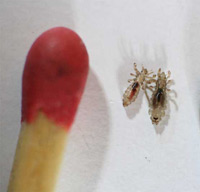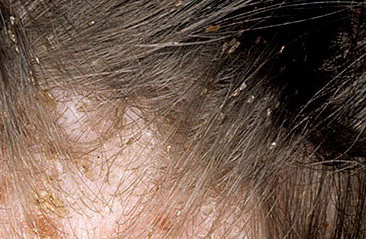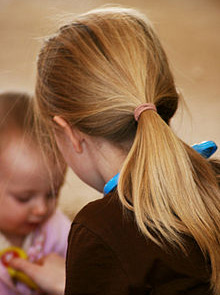PLEASE NOTE: We do NOT treat headlice or offer services for headlice in salon.
BATTLING HEAD LICE

Head lice are small wingless insects that feed on human blood only like a mosquito and are about the size of a sesame seed which is about 2-3mm long and 1mm wide. They are light or dark brown in colour and have 6 legs with claws. Head lice like both clean and dirty heads of hair and move very quickly when you part the hair to check for them.
Head lice can hatch in 6 to 7days but up to 30 days gestation is
required in colder climates. This is why some people treat for lice again in 7 days however discover a re-infestation one month later. They take twenty-eight days to become a breeding adult and moult three times during this period.
What are Nits?
A Nit is the un-hatched egg of head lice and is found stuck to the hair shaft near the scalp glued strongly where it is nice and warm and ideal for hatching the eggs. If an egg is more than 1cm away from the scalp it has either hatched or, is probably dead.

Head lice do not:
- Always cause itching and therefore scratching.
- Carry diseases.
- Fly, jump or hop they crawl
- Live on animals/ pets.
- Live for more than 8 hours away from a human host.
- They do not live in pillows or mattresses.
- Don’t fly or jump
- Die in Chlorine pools
Signs/what to look for:
- Really tiny black dots on your pillows!
- Nits/eggs glued to the base of the hair shaft near the scalp that will not move. If more than 1cm from the scalp the eggs have most likely hatched or are dead.
- Nits/eggs will have a sand or grit like feel to them when you run your fingers over them.
- Dandruff or a dry scalp can often be confused with a nit infestation the best way to tell is that dandruff is easily removed.
- Adult lice running for cover!
- The appearance of tiny white/brown specks firmly attached near the base of individual hairs. These are the 'nits' or eggs.
- Always check in a good bright light i.e. sunlight and a magnifying glass helps. Part the hair so you can see the scalp.
How do head lice spread?:
- Directly by close head to head/hair to hair, which is why kids are more susceptible.
- Girls are more susceptible to lice due to their close personal play i.e. More head to head contact. Clean hair is often more flyaway than dirty hair so this gives more opportunity for hair to hair transfer, however, dirty hair may make early identification more difficult.

Preventing head lice:
- Avoid direct head to head contact.
- Keep long hair tied or plaited.
- If you or your family do get infected treat at once and don't return kids to school until the day after treatment has begun. Remember Mums are often the victims of head lice more than siblings due to the close head to head contact.
- Avoid head to head contact and sharing combs, brushes, and anything else that may come into direct contact with hair.
Lice and eggs do not survive more than about 24 hours away from the scalp. To make sure, wash fabrics in hot water and where possible tumble dry with heat.
Other things that cannot be washed or subjected to heat, such as toys or delicate fabrics can be sealed in plastic bags for a few days after treatment.
How long do they live away from the head?
Lice usually do not live longer than one day away from the head. The eggs cannot incubate and hatch at a temperature lower than that near the scalp.

Inspection and removal of lice and nits.
Lice move quickly around the scalp, by using a lice treatment the thick cream will slow them down and make it easier to see them.
Start at the nape of the neck, work around towards the ears with a nit comb and remove all lice and nits by frequently rinsing them off the comb. Carry on combing and inspecting the whole head, even eyebrows. Read instructions of lice treatment as most products require follow up treatments
“SORRY THE WHOLE FAMILY NEEDS TO BE TREATED” So Parents please don't forget the follow-up treatments and blow waves and let us know if the family has had an infestation so we can give your hair the extra hydration and nutrition it requires after this ordeal. We can also give you peace of mind that the critters are gone.
PLEASE NOTE: We do NOT treat headlice or offer services for headlice in salon.

